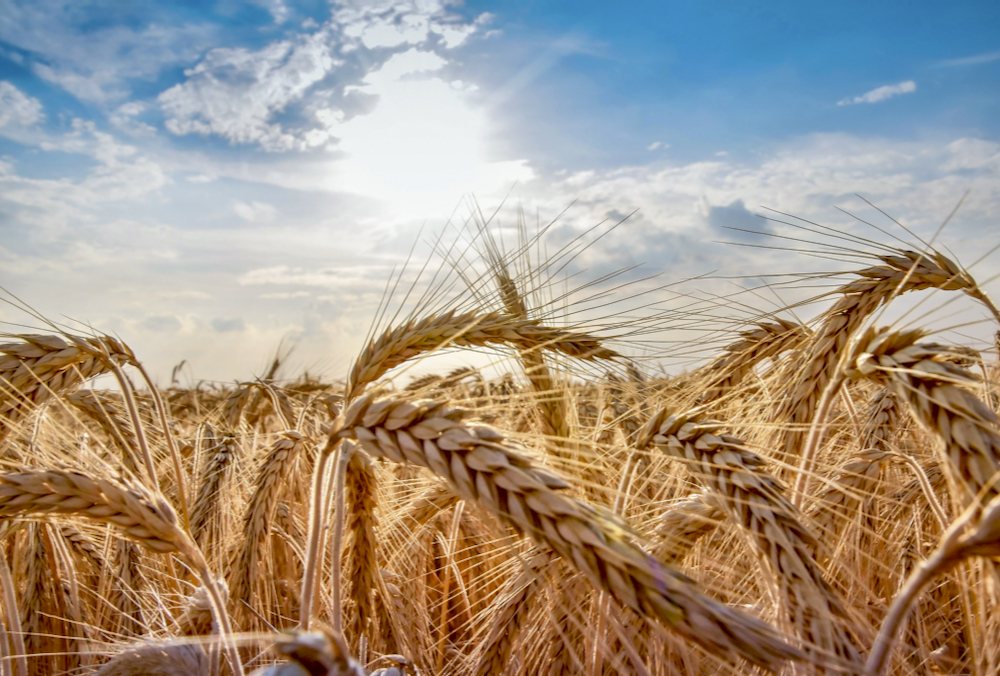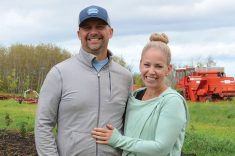With timely rains, organic farming could be a good place to be in 2022 — but it may not be enough to drive expansion of organic acres, said Laura Telford and Stuart McMillan.
In a talk during the Prairie Organics Conference on February 9, Telford, the provincial organic specialist, and McMillan, an organic farmer and organic inspector, shared data from an upcoming report they’re compiling for the Canadian Organic Trade Association (COTA).
They shared snapshots of four organic crops across the Prairies, which Telford said were “randomly selected,” but also important crops to Manitoba organic rotations.
Read Also

Finally getting paid for sustainable farming?
Alberta project says they might have a line on a workable ecosystem credit model to reward farmers for sustainability, and Manitoba might be next
Wheat
As with most commodities, organic wheat prices spiked in 2021, reaching up to $28/bu. for hard red spring wheat.
Organic wheat acres on the Prairies have been climbing since 2015, reaching nearly 376,000 acres in 2020 (the newest data reported). Saskatchewan grew the lion’s share each year, planting nearly 300,000 acres in 2020.
Organic wheat export volume climbed from 2017 to 2020, reaching nearly 250,000 metric tons (MT). As of October, nearly 67,000 MT were exported.
In 2020 Vietnam was the largest importer of Canadian organic hard red spring wheat, buying about $24 million in grain. China, Peru, Myanmar and Thailand were other big importers.
The United States imported the most organic durum at about $16 million, followed by Belgium at $8 million.
Telford and McMillan said there are signs organic wheat buying may slow, with some end-users already fully supplied to the end of July.
They noted that Canada, especially Saskatchewan, may be slightly oversupplying the organic wheat market.
Oats
Organic milling oat prices reached nearly $14/bu. in late 2021, over double the historic average. Telford and McMillan said they saw high contract prices for 2022.
Organic oat acres have also risen from 2015 to 2020, reaching nearly 281,000 acres from about 150,000 in 2015. Saskatchewan grows the most oats with Alberta a close second.
Exports topped out in 2017, reaching about 37,000 MT. In 2020, Canada exported over 27,000 MT.
The U.S. was the top importer of Canadian organic oats in 2020, buying over $7 million, followed by Japan and South Korea.
Oat milk is becoming a big driver of oat demand, Telford and McMillan said.
Flax
Organic flax reached record prices at the end of 2021, at around $75/bu. for brown and $80/bu. for golden. Global supplies are extremely tight due to drought.
Telford and McMillan noted that global demand for flax is growing at nearly 11 per cent per year because it’s a non-GMO source of omega-3 fatty acids and fibre. It’s also increasingly used in pet food and as a livestock additive.
Despite that, Prairie acreage has declined since 2017, falling to about 41,000 acres from 73,000. Most of that flax is grown in Saskatchewan, with Manitoba growing the second most on the Prairies.
Strong competition from more weed-competitive crops is a limited factor, said Telford and McMillan.
In 2020, Canada exported just over 2,000 MT of organic flax, up slightly from 2019, but down from 2017 and 2018 where Canada exported around 2,600 MT each year.
The U.S. bought about $2 million worth of organic flax in 2020, with Australia, China and Taiwan taking about $150,000 each.
Hemp
In November 2021, the price of hemp was about $2/lb., a record-high price.
There’s high demand for uncontracted acres, Telford and McMillan said, with high contract prices of over $2/lb. for 2022.
Hemp acres increased from 2015 to 2020, reaching nearly 20,000 acres from just over 5,000 in 2015. Canada grows about 85 per cent of the world’s organic hemp.
In 2020, Alberta grew the most hemp with Saskatchewan and Manitoba close behind. Alberta farmers grow hemp under irrigation, Telford said. This allows for much higher yields.
Canadians continue to consume more hemp, Telford and McMillan said, but the U.S. buys about 50 per cent of Canadian hemp.
They noted that hemp for CBD hasn’t become a major acreage driver in Canada.
Looking forward
McMillan told producers to “definitely expect more volatility carrying over to 2022.”
Transportation costs are up nearly across the board, as are input costs. He said organic farmers may also face competition for manure sources because of sky-high prices for fertilizer.
Because of high conventional prices and declining premiums for organic, current high prices may not be enough to drive expansion of organic acreage, he added.
There’s opportunity for the few organic farmers left standing, Telford said. Someone has to be there to capitalize on high prices.
“Consumer demand for organic has never really gone down,” she said. “Think of that as an opportunity.”
She said the government will likely do something to reduce farm fertilizer use. “Carrots or sticks or a mix of them,” she said. Organic farmers, already fertilizer free, may have an advantage.
















